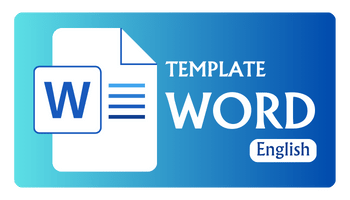Pemeriksaan Golongan Darah pada Siswa Kelas VIII MTsS Pondok Pesantren Darul Qur’an Desa Tambak Rejo
DOI:
https://doi.org/10.55824/jpm.v2i1.223Keywords:
Blood Type, Heredity, Antigen, Antiserum, Checking Blood Type.Abstract
Blood type is very basic and important in human life because it is hereditary (offspring) from parents. The term blood group refers to the entire blood group system that consists of antigens on red blood cells. Blood type refers to the specific reaction pattern of the antiserum given. Since its discovery by Karl Landsteiner in 1901, blood groups have contributed to the understanding of the mechanisms of heredity today. In this world, there are actually about 46 types of antigens besides the A-B-O antigens, it's just that they are much rarer. The method used is a blood group examination free of charge. The dedication activity in the form of checking blood type was carried out at MTsS Darul Qur'an Islamic Boarding School which is located on Jalan Tambak Rejo Medan Amplas, Percut Sei Tuan District, Deli Serdang Regency, North Sumatra Province. The target audience for this service activity is class VIII students. This service activity was carried out on February 16, 2022, from 09.00-13.00 WIB. The procedure for implementing community service consists of three stages including surveys and interviews, preparation, and implementation. Based on the blood group examination results as presented in Figure 3, it can be seen that the proportion for blood group A is 30.8%, blood group B is 23.0% and blood type O is 38.5% while the proportion for blood group The lowest AB is 7.7%.
References
Akbar, T. I. S., Ritchie, N. K., & Nurmala. (2019). Inkompatibilitas ABO Pada Neonatus Di UTD PMI Kota Banda Aceh Tahun 2018. Jurnal Averrous. 5 (2). 59–75
Amroni. (2016). Penerapan Rule Base Expert System Untuk Mengetahui Hasil Perkawinan Antar Golongan Darah. Jurnal Ilmiah Media SISFO. 10 (2). 319–328
Andriyani, R., Triana, A., & Juliarti, W. (2015). Buku Ajar Biologi Reproduksi dan Perkembangan. Yogyakarta: Deepublish
Bayususetyo, D., Santoso, R., & Tarno. (2017). Klasifikasi Calon Pendonor Darah Menggunakan Metode Naïve Bayes Classifier. Jurnal Gaussian. 6 (3). 193–200
Haqq, A. A. (2018). Analisis Sikap Matematis Berdasarkan Golongan Darah. Unswagati,. Prosiding SNMPM II. Cirebon. 202–210.
Roman, A. C., Romero, A. C., Castro-Sánchez, J. A., & López-MartÃnez, M. A. (2018). Blood Groups Distribution and Gene Diversity of the ABO and Rh (D) Loci in the Mexican Population. BioMed Research International. 1–11
Suyasa, I. G. P. ., Wulansari, N. T., Kamaryati, N. P., Mastryagung, G. A. D., Sutini, N. K., & Rismawan, M. (2017). Pemeriksaan Golongan Darah Dan Rhesus Pada Anak Kelas 4 , 5, dan 6 Sekolah Dasar Di Desa Tribuana Kecamatan Abang Kabupaten Karangasem. Jurnal Paradharma. 1 (2). 115–119
Zhang, C., Li, Y., & Wan, L. (2015). Blood Group AB Is Protective Factor for Gestational Diabetes Mellitus: A Prospective Populationbased Study in Tianjin, China. Diabetes/Metabolism Research and Reviews. 31 (6). 627–637.
Downloads
Published
Issue
Section
License
Penulis yang menerbitkan jurnal ini menyetujui persyaratan berikut:
- Hak cipta atas artikel apa pun dipegang oleh penulisnya.
- Penulis memberikan jurnal, hak publikasi pertama dengan karya yang dilisensikan secara bersamaan di bawah Lisensi Atribusi Creative Commons yang memungkinkan orang lain untuk membagikan karya dengan pengakuan atas kepenulisan dan publikasi awal karya tersebut dalam jurnal ini.
- Penulis dapat membuat pengaturan kontrak tambahan yang terpisah untuk distribusi non-eksklusif dari versi jurnal yang diterbitkan dari karya tersebut (misalnya, mempostingnya ke repositori institusional atau menerbitkannya dalam sebuah buku), dengan pengakuan dari publikasi awalnya di jurnal ini.
- Penulis diizinkan dan didorong untuk memposting karya mereka secara online (misalnya, di repositori institusional atau di situs web mereka) sebelum dan selama proses pengiriman, karena hal itu dapat mengarah pada pertukaran yang produktif, serta kutipan yang lebih awal dan lebih besar dari karya yang diterbitkan.
- Artikel dan materi terkait yang diterbitkan didistribusikan di bawah Lisensi Internasional Creative Commons Attribution-ShareAlike 4.0








